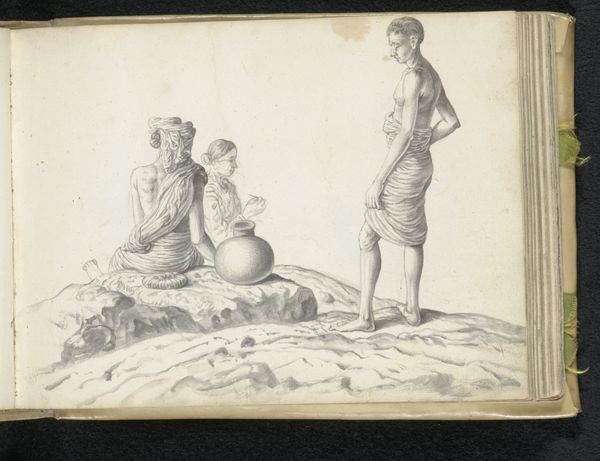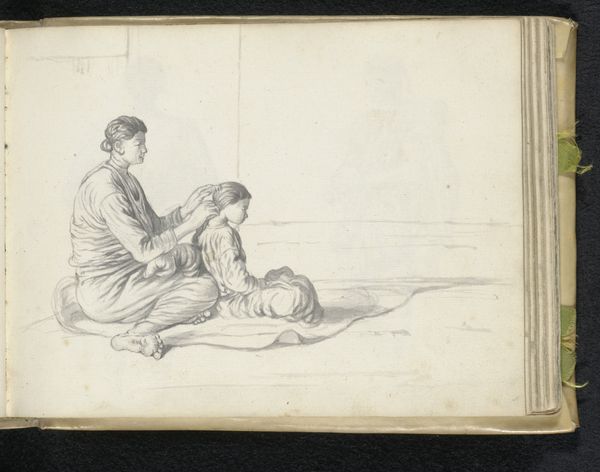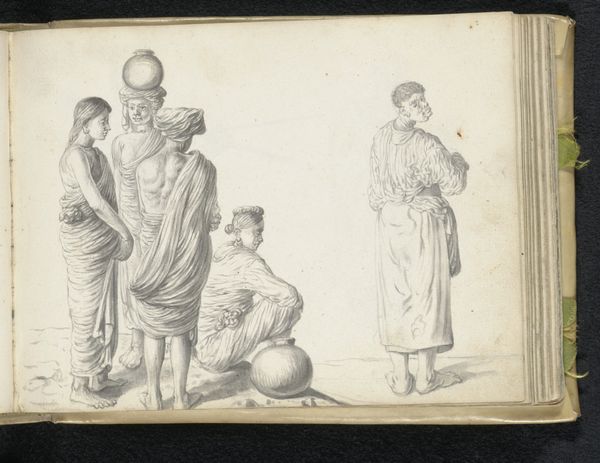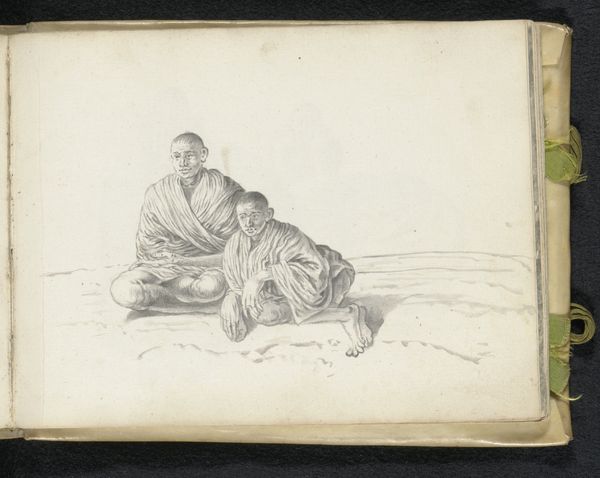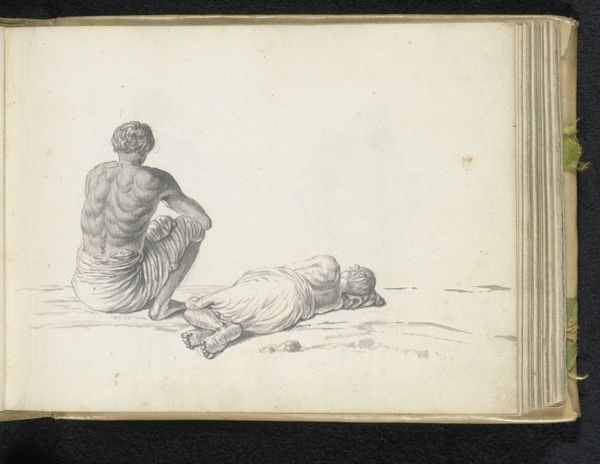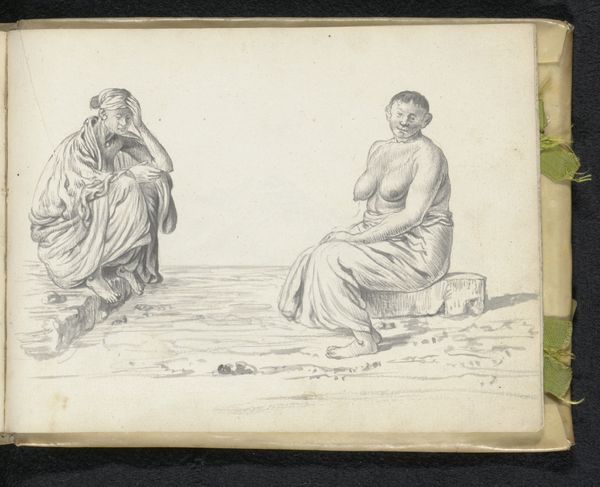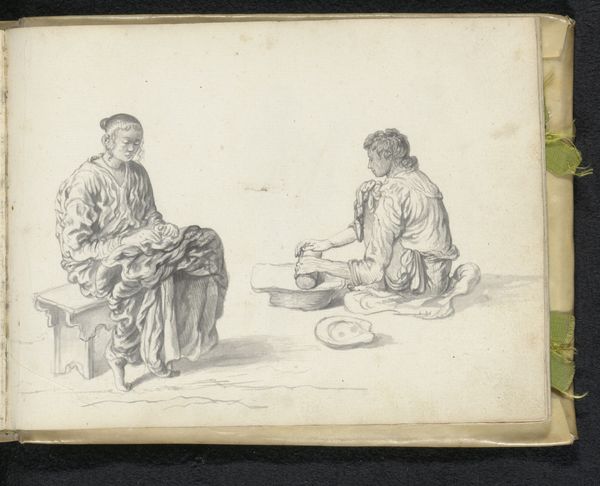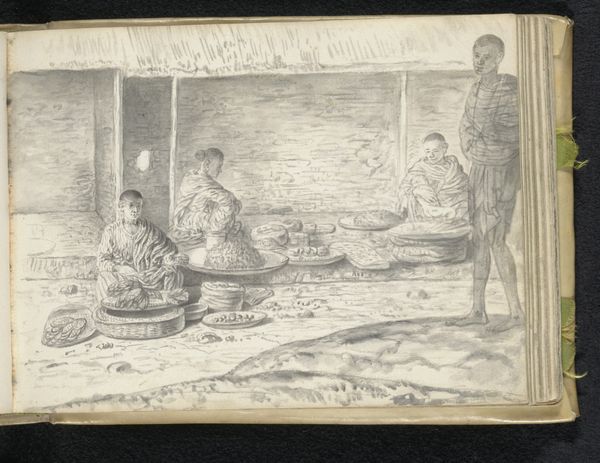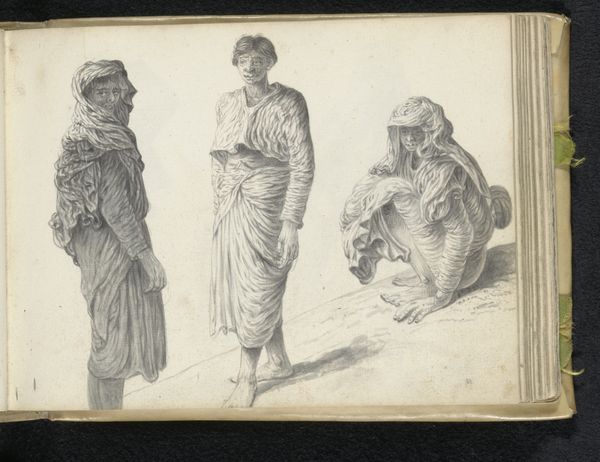
drawing, paper, pencil
#
portrait
#
drawing
#
aged paper
#
toned paper
#
light pencil work
#
dutch-golden-age
#
sketch book
#
figuration
#
paper
#
personal sketchbook
#
pencil
#
line
#
sketchbook drawing
#
watercolour illustration
#
genre-painting
#
storyboard and sketchbook work
#
sketchbook art
#
watercolor
#
realism
Dimensions: height 148 mm, width 196 mm
Copyright: Rijks Museum: Open Domain
Esaias Boursse rendered this graphite drawing of a Eurasian woman with a wet-nurse and child. The motif of mother and child reverberates through centuries of art, echoing images of the Madonna and Child, a powerful symbol of nurturing and divinity. The wet-nurse figure introduces a fascinating shift. In various epochs, we see this figure—a surrogate mother—as a symbol of both care and social stratification. Consider the art of the Renaissance, where noble families often depicted wet-nurses in portraits, signaling wealth and status while subtly acknowledging the complexities of motherhood. The act of entrusting one’s child to another taps into deep-seated anxieties and desires. This image becomes a potent site for exploring the ever-evolving dynamics of family, societal roles, and the primal emotions that bind us.
Comments
No comments
Be the first to comment and join the conversation on the ultimate creative platform.
